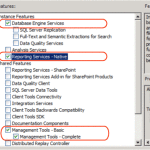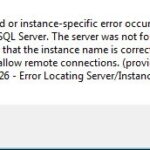Tactics which help to creating custom report templates in SSRS
Deploying the customized report on the SSRS templates is not a very complex task though it needs a lot of concentration. It is represented in a single form format along with the header and footer sections. When the starting phase is begun; the reports are explored in the enterprise level. It ensures the requirement on the consistent outlook. For an instance, the header of this kind of reports should have the associated company logo and also the address where on the other hand; the footer should consist of other company’s information across a global transaction. Now the challenge has become for the developer is to maintain the uniqueness and enhanced nature in functionality. This is much of the great fortune that the SQL Server Reporting Services processes an allowance to create the standard or customized version of report templates as per the demand of the organization.
Methodologies in process:
Creating the custom report as the form of the template makes no difference with the depiction of the new report. Only one expectation is the placement of the template in the appropriate location based on the reported identification number. This is appeared as the submenu that is the New Item in the displayed rectangular dialog box. Here the header takes the input like the company logo and the Report Name. Simultaneously the footer section cannot be vacant. It contains the execution time of the process and the materialistic information of each page.
Tracked steps:
If the motive of this discussion is to serve some assistance to the constructor, then the steps must be shown in a consecutive manner. It guides the users with the necessary amount of up gradation. Those can be abbreviated as following:
- The Start button is clicked first and then the All Programs are selected.
- Now the Microsoft SQL Server of 2008 or R2/2012 is configured and set to establish the connection.
- The SQL Server Business for the Intelligence Development Studio that is the BIDS or the SQL Server Data Tool (SSDT) is chosen.
- The respective property is right clicked. It pops up the window for that selected property through BIDS or SSDT.
- In this window, the path value is copied in the Target box.
- The program is built up then and the path is pasted locating the exact folder.
- The user has to go to the Private Assemblies section. The Project Items is clicked afterwards.
- This is the final step to generate Report Project. The custom report is exposed like the template mode as the outcome.
Conclusion:
SQL Server Reporting Services has given the freedom to create a standardized mode every time. That is completed to look at the report with a distinct feeling of satisfaction. Apart from this creation, it maintains to build up the links that actually mean the destined factors’ retrieval. The notification serves the way through which the user becomes able to change the propagation of the system. This keeps the individualism which increases the craze beyond the limited arena of technical revolution.
About The Author: Brianne is a writer/ blogger. She contributes to Ali Jawad. Check here for more on Ali Jawad





